
Manage Order Delays & Forecast Demand as the Pandemic Recedes
Are you prepared for the holiday rush? A new shopping season is about to begin! Get your pre-written shipping notifications for every purpose.
Boost customer experience and reduce support tickets
Realtime order and shipment tracking
Proactive order and shipping notifications
Predictive pre-purchase estimated delivery dates
Self-Serivce branded order tracking
Effortless experience delivered
Make returns profitable and delight customers
Flexibility to define any return destinations & conditions
Simplify returns for your customers and team
Incentivize exchanges over returns
Returns management made easy for your team
Understand why your customers are returning
Unify the online and the in-store experience
Hassle-free pickup experience for customers
In-Store Dashboard to keep operations streamlined
In-Store and Online orders unified
Drive foot-traffic to your stores
Boost customer experience and reduce support tickets
Realtime order and shipment tracking
Proactive order and shipping notifications
Predictive pre-purchase estimated delivery dates
Self-Serivce branded order tracking
Effortless experience delivered
Make returns profitable and delight customers
Flexibility to define any return destinations & conditions
Simplify returns for your customers and team
Incentivize exchanges over returns
Returns management made easy for your team
Understand why your customers are returning
Unify the online and the in-store experience
Hassle-free pickup experience for customers
In-Store Dashboard to keep operations streamlined
In-Store and Online orders unified
Drive foot-traffic to your stores
Find the answer to all your questions
Explore the most comon questions about WeSupply
Calculate the ROI that WeSupply can bring you
Request a no strings attached review of your current shopping experience and missed conversion opportunities
Take a step by step trip through our functionality to see how we can improve your ecommerce processes.
Read actionable articles on how to optimize your post-purchase experience and decrease support tickets
Get inspired by stories of how our customers implemented an effortless post-purchase experience
A Deep Dive into Top Companies' Order Tracking & Returns Strategy
Wondering if WeSupply is a good fit for you? Read through our use cases to see how we can help you increase conversion & improve CX!
These 10 techniques will help you take the Post Purchase Experience to the next level.

It’s one thing to say WeSupply’s post-purchase experience delivers an effortless experience for your ecommerce customers, but what does that actually mean for your business? Quite a lot.
We will explore the concrete ways in which implementing the WeSupply platform can benefit your organization. We’ve grouped several key elements of the service into three overarching benefits; improving conversion rate, generating revenue, and cost savings.
WeSupply improves your conversion rate by setting the right expectations for your customers during the consideration phase, easing potential shipping anxieties and encouraging them to buy. This is achieved through visibility and transparency.
Given the endless retail options online, it makes sense that customers shop around until they find the brand that makes them feel the most comfortable. The data supports this thought as well, with over 54% of online consumers saying they’re more likely to shop again with retailers that provide estimated delivery dates and times during the pre-purchase experience.
Opting to show delivery dates instead of shipping times puts an emphasis on clarity at a time when your customers need it most. In fact, 54% of surveyed customers say they would shop again with a retailer who showed accurate delivery dates during the pre-purchase phase. This is because delivery dates mitigate shipping anxiety, and give the user a clear sense of what to expect.
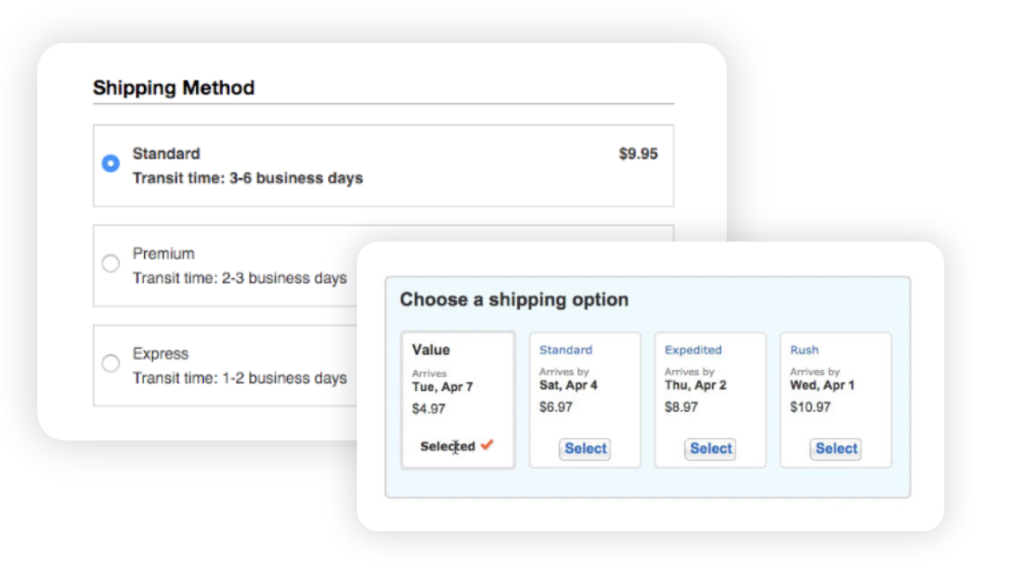
Why are delivery dates more effective than shipping times? Shipping times are limited in that they only describe the time in transit. They don’t take into account processing time (which can vary not only from business to business but even product to product), or holidays, weekends, and other non-shipping days.
If a customer selects UPS 3-Day Select, they would reasonably assume they’d get their order in three days – but this is not the case. Add in two days processing time, as well as a weekend in the middle of the shipment’s journey, and we’re up to seven days now. The customer could figure this out on their own, but realistically only a small percentage will bother. Offering clear delivery dates avoids an unnecessary friction point.
How does the delivery date estimator work? Expected delivery dates are accurately calculated using a mixture of historical processing time, carrier data, cut-off times, workdays, holidays, and specific product information.
Do you have some products that take longer to process than others? No problem. Simply adjust the processing time for those certain products to display the correct time frame. This way you can still maintain competitive dates on easier items while being honest about the tougher ones.
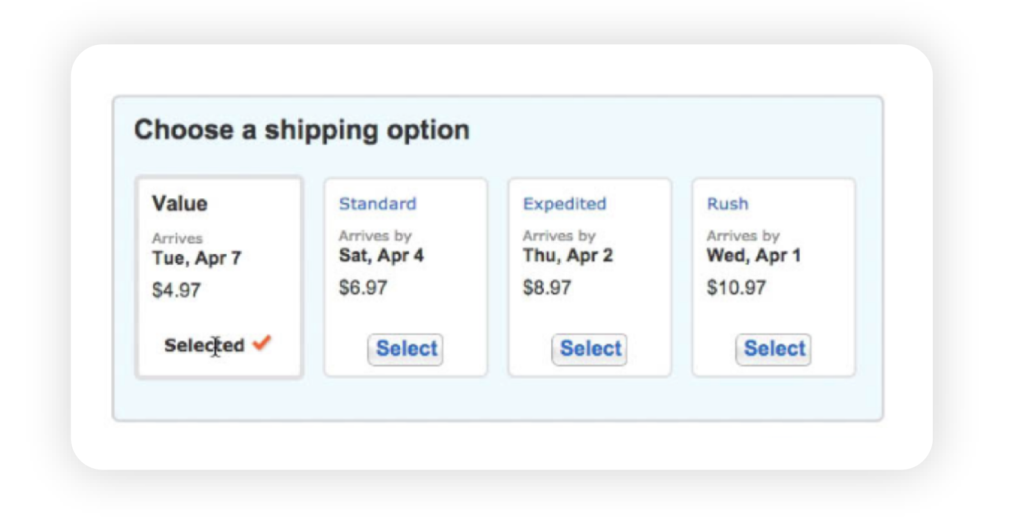
Opting to display delivery dates makes it easy for the customer. By using clear icons with various shipping methods and their expected delivery dates you take the guesswork out of the consideration phase.
The customer simply has to decide if they want to pay an extra few dollars for the item to arrive on the Friday before a holiday weekend or if it can wait until that following Tuesday when shipping time resumes. No math required and no unnecessary barriers in the way of conversion.
Shipping cut off times are critical to offering a true effortless experience. They work in conjunction with the delivery date estimator to set honest expectations from the very start. After all – the whole estimation is only accurate if you know when it begins!
The cut off time not only reflects the remaining time for that day’s order processing, but accounts for holidays, weekends, and other non-shipping moments as well.
Using cut off times helps to mitigate shipping anxieties in online shoppers during the consideration phase. This increases conversion and creates a sense of trust with the customer – the foundation of brand loyalty and repeat purchases.

Retailers can create a sense of urgency for their customers when strategically placing cut off times on the product, cart, and checkout pages in a countdown format.
When a customer is on the fence, knowing that they’d have to wait an extra weekend to get their products is sometimes the only motivation needed to change “I’ll come back later” to “buy now.”
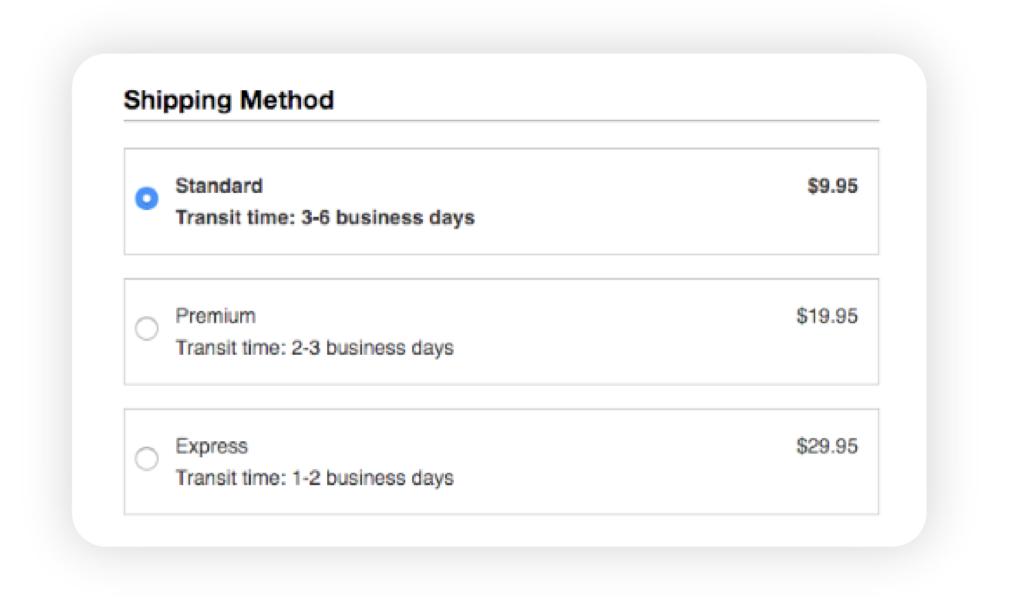
It’s important that shipping cut off times display dynamic, relevant information for the consumer.
The goal is to take the guesswork and manual calculations of time zone differences out of the user’s hand. Therefore it’s best to avoid blanket statements like “orders placed by 3PM EST ship same day” and opt instead for “order within the next 43 minutes for same day order processing.” These two lines may technically say the same thing, but the presentation is key.
Thinking about the post-purchase phase as the end of the customer journey is a big misstep. In reality, this window is full of opportunities to re-engage customers with marketing content as they eagerly want to hear about order.
WeSupply helps you to turn these high opt-in transactional communications into fully branded, shoppable moments that are tailored to the user’s interests. Delight your customers and drive sales in the process – the perfect combination!
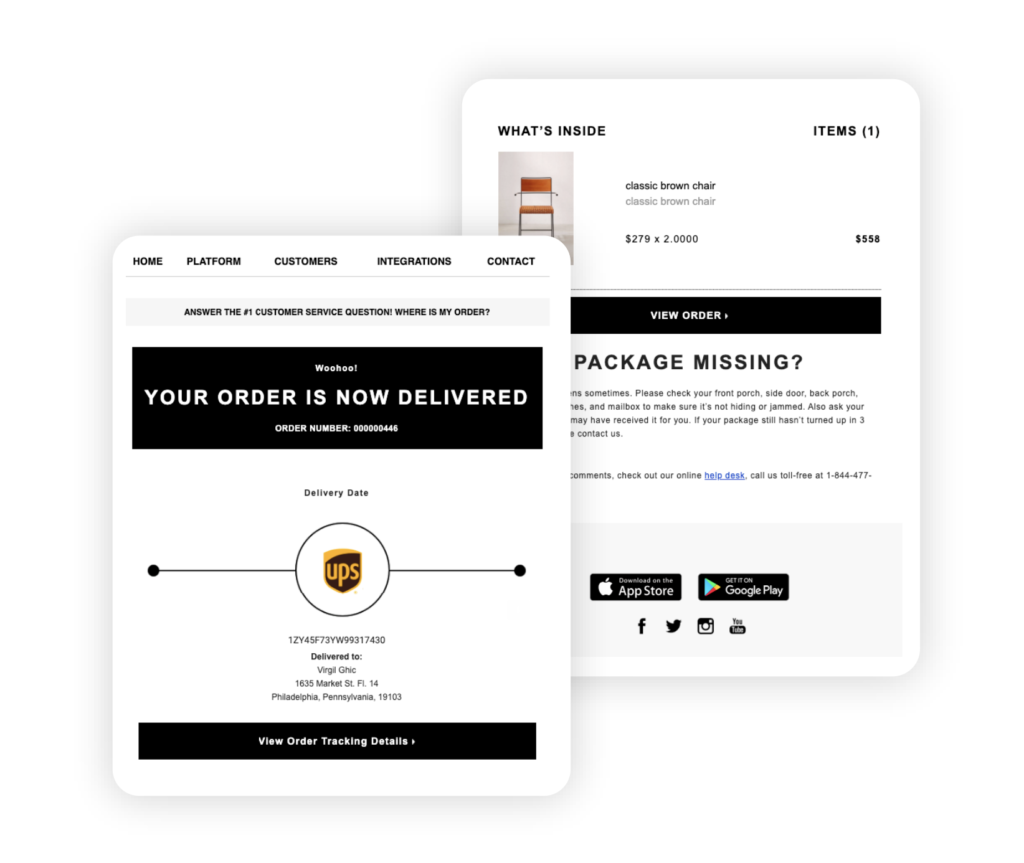
Once upon a time it was totally acceptable to take a customer’s order then send them a simple tracking number and walk away happy. Ecommerce has changed a lot since then, and that behavior simply doesn’t fly with consumers in 2019.
Proactive email/SMS notifications are not only the industry standard methods of communicating with customers through the post-purchase and returns process but are also effective tools in re-engaging with them. Oh, and they expect it.
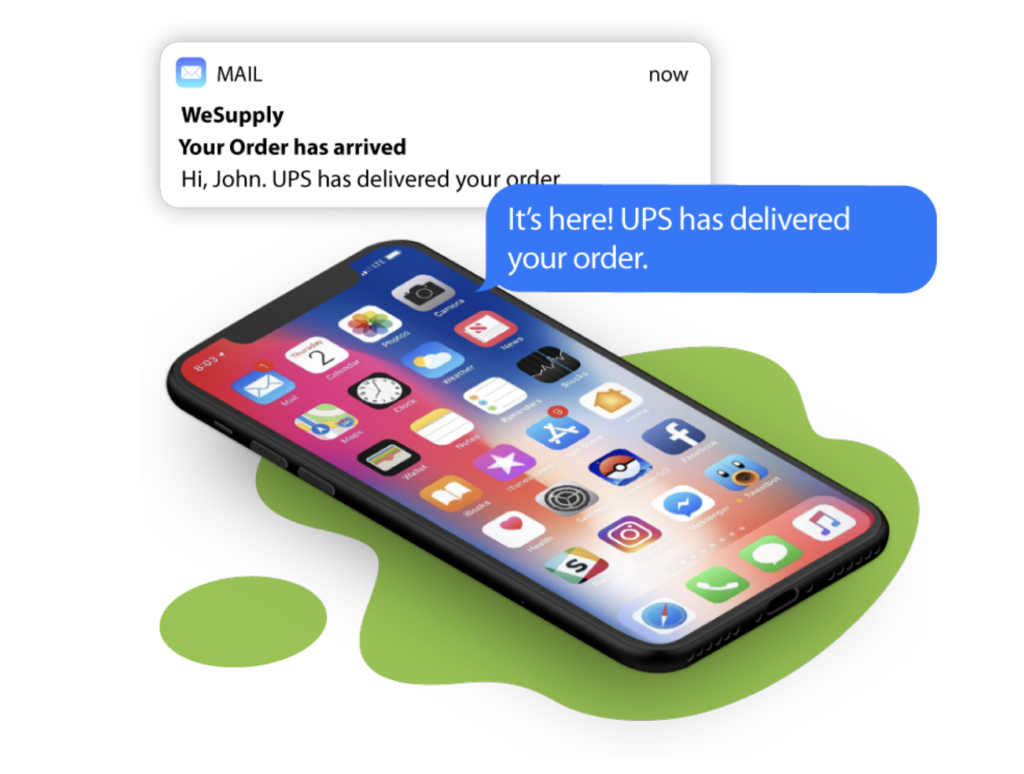
Let’s look at notifications by numbers to paint a clearer picture
MORE THAN
30%
of customers wouldn’t return to a retailer who didn’t send useful follow-up (post-purchase) communications.
MORE THAN
80%
of customers say they expect regular communications about their purchases.
MORE THAN
10%
of customers reported feeling over-notified during a post-purchase experience in the past.
MORE THAN
60%
of customers are likely to purchase from companies that would offer them a choice of notification methods.
TRANSACTIONAL EMAILS HAVE
3X Higher
open rate than marketing emails.
80%
of customers say they expect regular communications about their purchases.
10%
of customers reported feeling over-notified during a post-purchase experience in the past.
Get More Insights!
Here we see a poor example of using shipping cut-off times. While the information is there, it requires too much manual calculation to be done by the customer. Which time zone are they in? What’s the time difference between the two? What time is it right now? Ahhh!
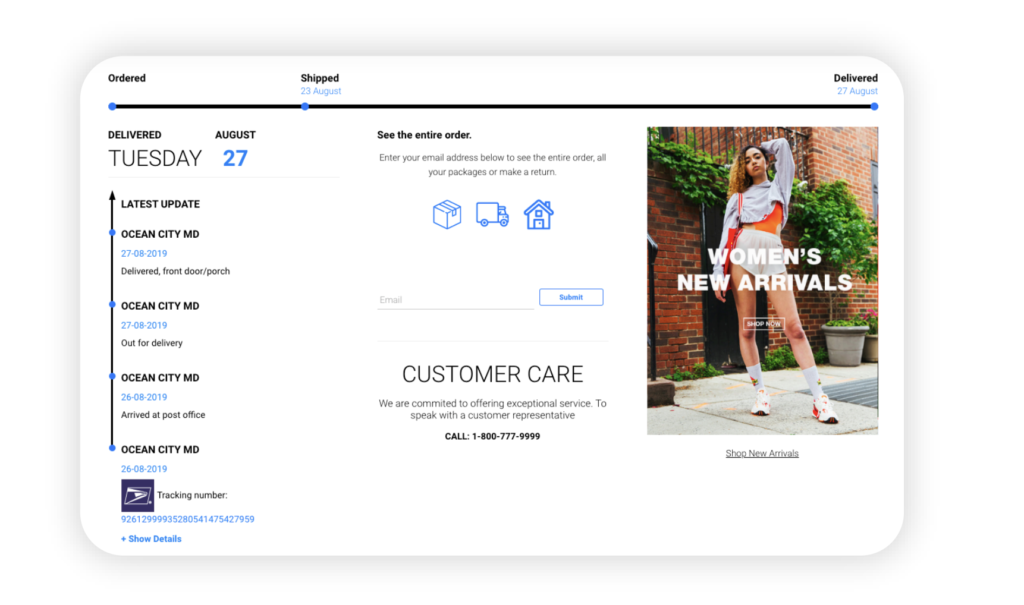
As the name implies, the Order Tracking page is designed to empower customers through proactivity and self service – letting them know exactly where their order is at all times. While it’s true that the Order Tracking page provides key information to the customer – there are also many benefits to consider.
Perhaps the biggest one is the chance to re-engage customers while they are most open to receiving communications from you. Use those proactive notifications to direct customers to a dedicated, branded Order Tracking page that provides value-add content and product recommendations. Cultivating a tailored experience for customers helps them get the most out of the products they’ve already ordered and lets you upsell them items through dynamic marketing content.
Empower Customers: By offering the customer order/tracking details, estimated delivery date, link to customer care, quick access to full Order Detail page, and a thorough breakdown of what’s in the box(es) that are on the way you offer customers an effortless experience. You mitigate their anxieties, cut down on customer service calls, and increase the likelihood they’ll purchase again.
Brand the Experience: When retailers send customers to a third party site to track their order they lose the branded feel they worked so hard to achieve through their website design and marketing efforts. The worst part? Customers notice this and instantly feel the disconnect (along with a large possibility of confusion).
Re-Engage & Upsell: Post-purchase is when customers are most likely to be checking back in with you, with the average U.S consumer tracking their order four times! Use this opportunity to create a custom experience based on the user’s past purchases and interests. 53% of online shoppers have actually said that a thoughtful and personal experience is more important to them than a discount! Generate sales through your Order Tracking pages by adding banners and showcasing products, promotions, and collections that your customer will love.

When thinking of ecommerce returns, the typical situation involves mailing back the item for a refund. Believe it or not, this process may actually be alienating customers. 20% of customers to be specific. These shoppers say that despite their love for buying online, they’d rather handle the returns process in-store (hence BORIS, or Buy Online Return In Store), where they’re also more likely to spend money with you again.
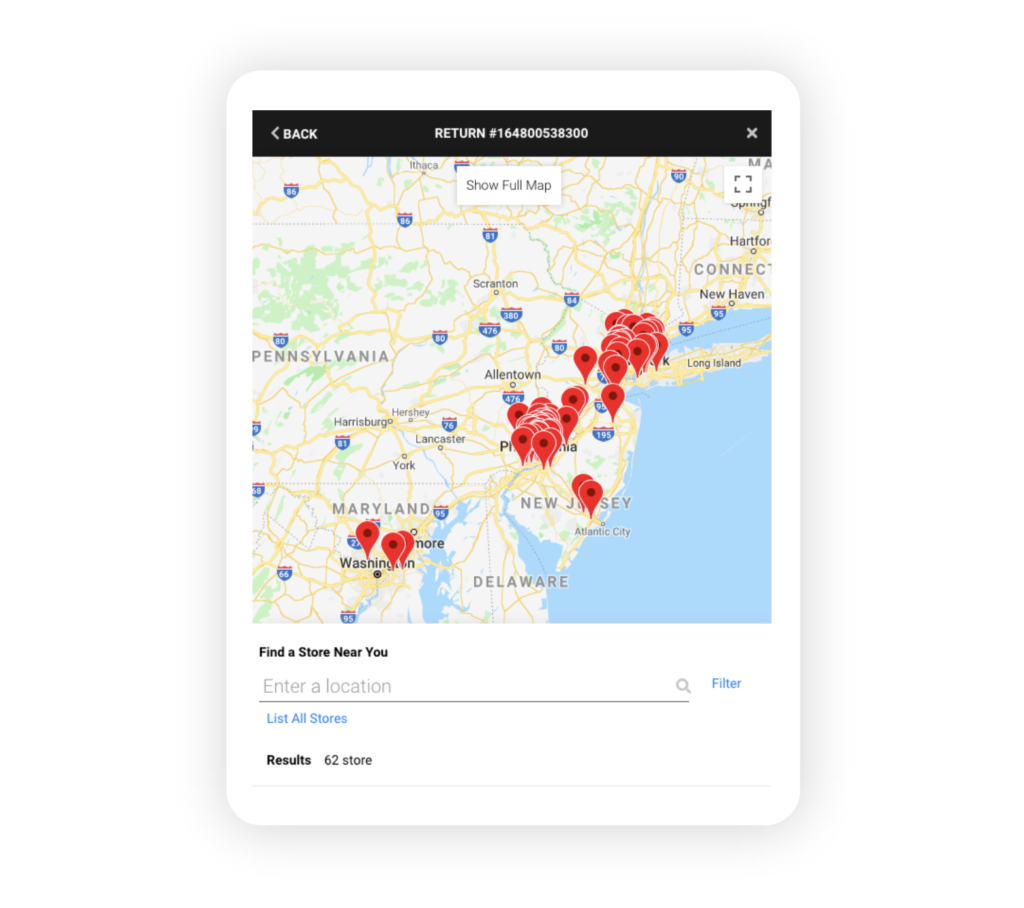
Whether it’s anxiety about return packing, shipping costs, or not wanting to wait for a refund – the important takeaway is that it gives retailers with a brick and mortar presence a distinct advantage over those who don’t.
Cost: Many customers worry about losing out on the shipping fees that are associated with making a mail back return. This worry actually stops 11% from making a purchase in the first place, as they are unsure of the return policy. By offering the option of an in-store return you put these customers at ease and win their loyalty.
Convenience: Many customers don’t see a point in shipping an item back across the country to a warehouse when they could simply drive three blocks away to their local store. Delight them by giving them a faster, easier way to return.
Speed: With no in-transit time to worry about, return an item to a brick and mortar location cuts significant time off the refund process. Also, an in-store experience with knowledgeable associates can offer the fastest route to answers for those customers seeking clarity about the returns process
Exchanges: Online exchanges can be time consuming (send the item back, wait, get the new item sent to you) and confusing, but in-store is a whole different experience. The customer can simply drive there, walk in, and walk out with the better fitting option!
Quicker Inventory Cycle: Inventory isn’t doing anyone any good if it’s sitting in a pile at the distribution center. Seasonal and promotional items are especially time sensitive, with only a brief selling window to begin with. Items returned to an in-store location can be quickly flipped and placed back on the sales floor, adding up to big savings on the bottom line.
Cost Savings: Many retailers offer free shipping on returns to stay competitive with bigger brands like Amazon – and these costs add up. With BORIS the customer simply drives the item right back to your doorstep, saving you some money on each return. Not bad considering that over 7% of online shoppers admit to buying multiple variants of products with the preconceived intention of returning the ones they don’t like.
Re-Engagement: Getting a customer into a brick and mortar location is a huge opportunity for a retailer. Especially a customer who has just received some extra money in their pocket. This offers a big chance to re-engage and remarket to the customer – who is obviously already a fan of the brand to begin with. Oftentimes these customers will walk away spending more money than they initially had for the item being returned.
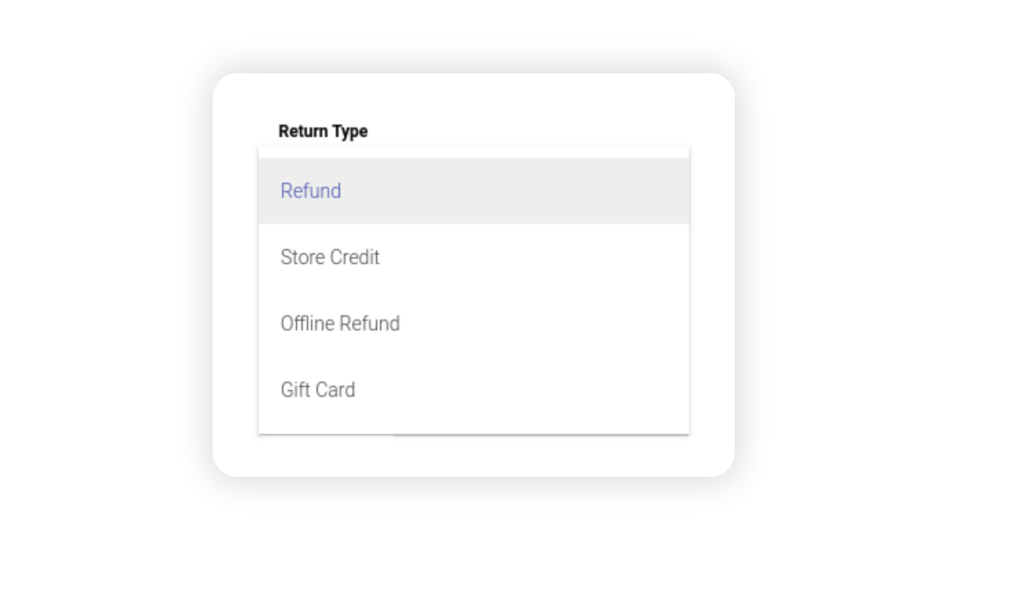
A truly flexible return policy isn’t complete without giving the customers several options in the way they receive their refund. Adding store credit and gift card options are a great way to expedite the refund process for your customers while mitigating revenue loss.
Store credit/gift cards boost retention, increase brand loyalty, and build brand advocacy. In simpler terms, they ensure that the customer will be spending that money with you again – giving you another chance to “wow” them with an awesome experience to gain a fan for life.
Another benefit of store credit and gift cards is the perception of “free money” in the hands of the customer. Unlike cash which can be saved for other things, the customer will feel less apprehensive about spending the store credit – oftentimes purchasing something at a higher value and adding some cash in to cover the balance.
Opting for non-cash refund options also allow retailers to extend their return policy to be more generous to customers. For instance, many will offer a cash refund up to 30 days for an unopened product – but if the time runs out or the product has been opened the refund can only be issued in store credit. In doing so, the brand is able to help their customers, mitigate disloyalty, and not cut into their margins.
WeSupply knows there’s more that goes into running a successful business than just money, so when we say cost savings we don’t just mean cash (although you’ll be saving a lot of that too). It takes equal parts resources, time, and effort to keep things running like clockwork, and unfortunately these are three things that can be seriously affected by the mishandling of the post-purchase phase. Our platform was designed to yield big savings in all three of these areas so you can focus on building the best business and brand experience possible.
Returns are ingrained into the ecommerce experience. Over 53% of online shoppers have returned at least one purchase in the last year – and 11% won’t even make a purchase if the return policy doesn’t look good. In order to make the returns process easier for customers many retailers include a prepaid shipping label with each package they ship out.
While this is helpful for the customer, the fact of the matter is that it costs 35 cents for each label, which eats away at profit margins really quickly. WeSupply offers a better alternative – one that is just as easy for customers, and saves you a ton of money!
The WeSupply platform operates on the principle of self-service. Customers initiate their own returns, and can simply generate their own return labels straight from the portal. The retailer only needs to authorize the return and then sit back and wait for the package to arrive. No more printing out label after label to simply be tossed away in the trash.
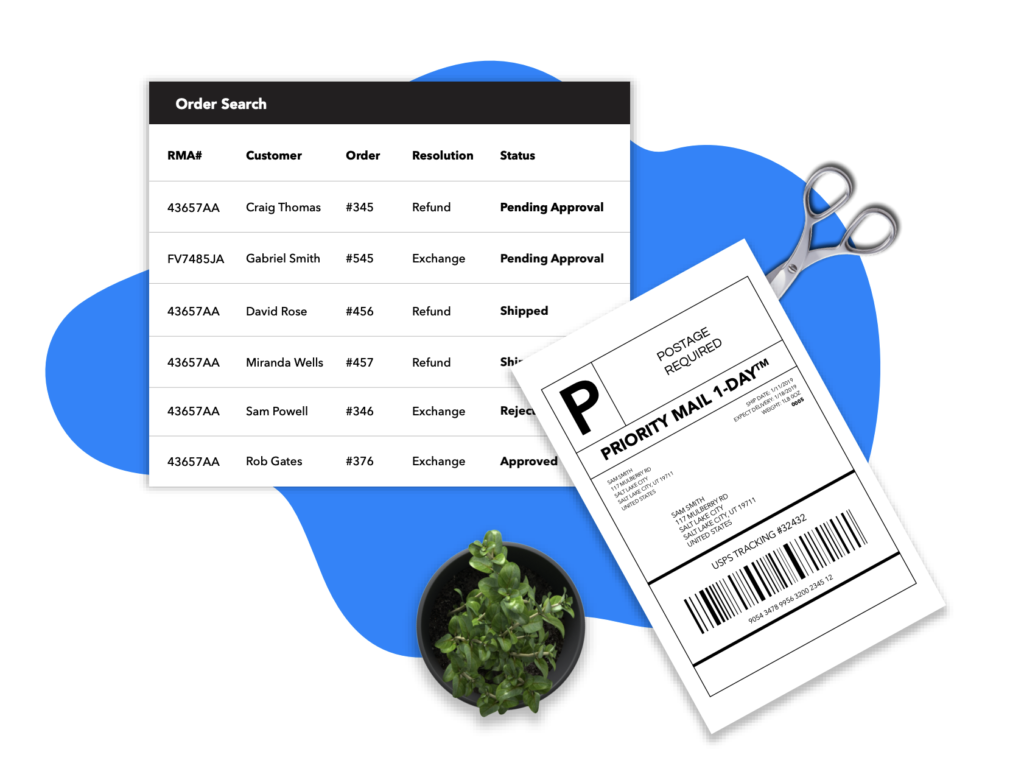
Not knowing the location of an order or the status of a refund can be a real deal breaker for most online shoppers. Luckily WeSupply helps you solve both of these issues.
With WeSupply, WISMO (Where is My Order) calls are are largely a thing of the past. We’ve built an entire post-purchase experience based on proactivity and self-service to eliminate these calls to your support team!
How does WeSupply cure the WISMO Blues?
WeSupply also mitigates WISMR (Where is My Refund) calls by offering reverse tracking on all returns that are sent out. This works the same as when an incoming order is coming to them, only the point of origin is different! First the customer completes the self-service returns process, and a tracking number is generated along with the return label.
All they have to do is simply drop the package off at the post office, and let their fully functioning Order Tracking page keep them updated. They can also choose to opt into proactive notifications, which clearly communicate the shipping events, reception of the package, processing, and refund issuance. The customer won’t need to call customer service because all information will be clearly, proactively communicated to them.
Due to the vast nature of the ecommerce industry, customers have more choices than ever when selecting a retailer. The downside of this however is that 84% of online shoppers say it only takes one bad experience to leave a brand behind for good. Not surprisingly, the cause to many of these issues stem from unforeseen events that occur while the package is out of your hands and in-transit with the carrier (aka: exceptions).
Delays, missing packages, and carrier complaints may not be the retailer’s fault, but in the customer’s eyes – they are! Since perception is reality, it’s critical for brands to help their shoppers through this process if they’d like to keep their relationship afloat.
Delays: These can be the result of a wide number of issues such as inclement weather or a routing issue. Usually adds one business day to the estimated delivery date, unless stated otherwise.
EDD Adjustments: Any changes to the estimated delivery date. Especially problematic for customers who are expecting an important or time sensitive package and may have altered plans to be home to receive it.
Failed Delivery Attempts: Carrier was unable to deliver the package. This can be the result of many issues, the two most common being an incorrect/incomplete address or no one being home to sign for the package.
While a retailer may not be able to stop these exceptions, they can get ahead of them by proactively messaging the customer. This helps to reduce churn in two ways:
After all, most customer frustration comes from being unaware of what’s going on. By letting them know you can readjust expectations, and put them at ease knowing that the issue is being worked out.
While it’s quite challenging to keep up with the everyday customer service issues that face online retailers – nothing is impossible with the right strategy.
WeSupply is the helping hand you’ve been looking for to help take things to the next level for your customers.
Now that you have the tools and information you need to start — all that’s left to do is to get to work.
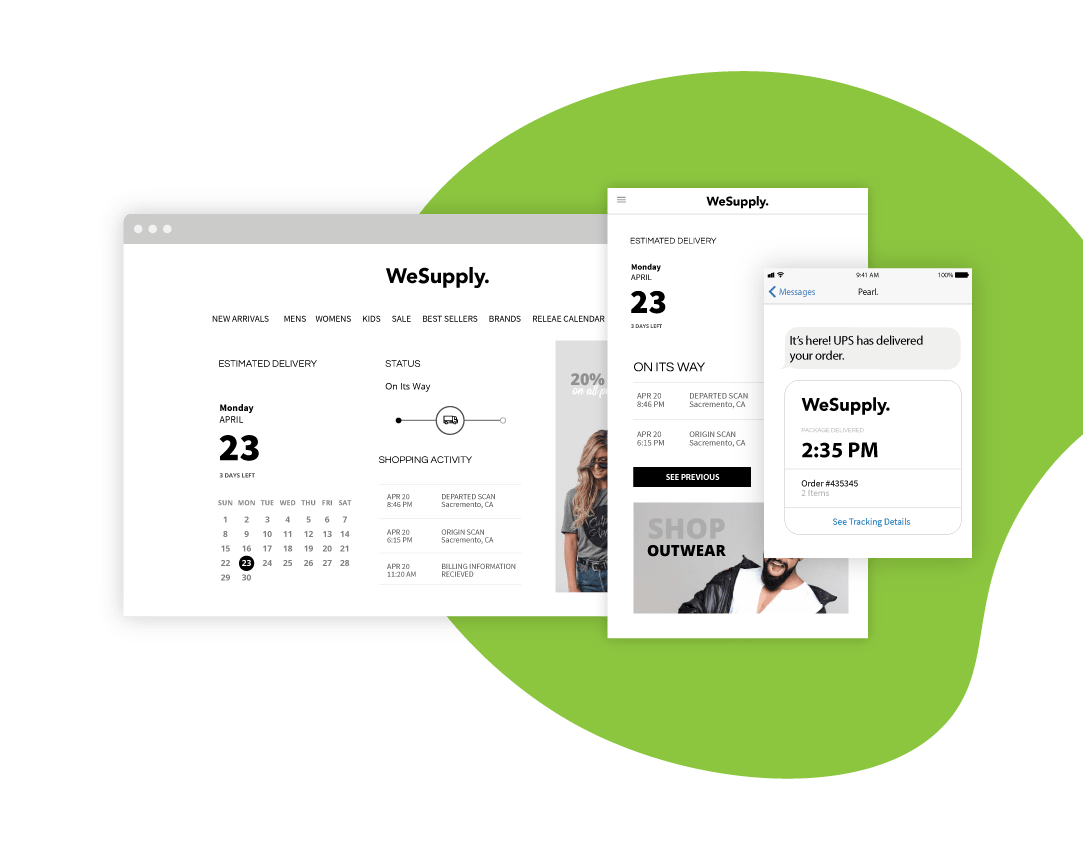
Get the 10 techniques that will help you take the Post Purchase Experience to the next level
Learn How To Create Successful Post Purchase Email Campaigns
Build an effective post-purchase email flow that helps you increase customer satisfaction and drive revenue growth!

Are you prepared for the holiday rush? A new shopping season is about to begin! Get your pre-written shipping notifications for every purpose.
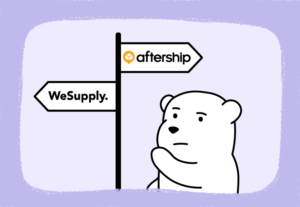
AfterShip Tracking vs WeSupply: 6 Features To Consider Before Applying The AfterShip Solution To improve the customer experience, optimize your post-purchase operations using the right
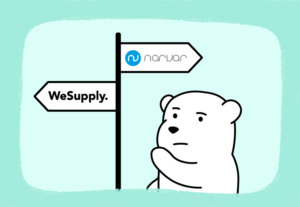
What are the 10 questions you need to ask before signing up for Narvar Tracking? Book a demo with us When it comes to Post-Purchase
In this article, we’ll look at the Shopify Order Tracking vs the WeSupply app and find out the better solution for your Shopify store.
How Tracking Works With Magento And Why You May Need Additional Tracking Apps For Your Business. Get a Free Demo If you’re running an online
Last Mile Carrier Tracking: Is your Last-mile Delivery System Putting Your Business At Risk In the Long Run? When talking about last-mile carrier tracking transportation, we

Post-Purchase Analytics: Improve Your Shipping Estimates By Knowing Your Insights Ecommerce is slowly, but surely, evolving to the point that it is entirely customer-oriented. Learn

What is WISMO 1. What is WISMO and why you should care 2. Why are there delays in shipping my order? 3. How to deal

The pricing plans in WeSupply were always designed to grow with your business. Now, we have an option for the very early stage ventures too.